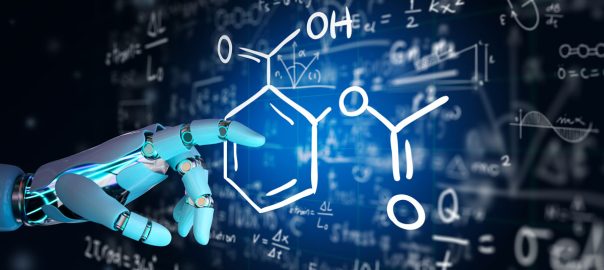With the growing need for computational power and analytical accuracy in various industries, machine learning has created a paradigm shift in the way we process, analyze, and make decisions based on vast amounts of data. In the chemical industry specifically, machine learning has brought about tremendous benefits in the development of new chemical compounds, formulations, and processes.
Machine learning has the potential to outperform traditional methods of chemical development by learning from existing data, predicting results for new scenarios, and continuously improving through iterative processes. This accelerates discovery and reduces the cost of the development of new chemicals. Moreover, machine learning algorithms can process large amounts of data in a fraction of the time it would take for humans, allowing for quicker and more efficient decision-making.
One of the main applications of machine learning in chemical development is in the prediction and optimization of chemical properties. By analyzing large datasets of existing compounds and their properties, machine learning algorithms can identify patterns and relationships between different chemical structures and their corresponding properties. This enables researchers to predict the properties of new compounds with a high degree of accuracy, saving time and resources in the development process.
Additionally, machine learning can also aid in the design of new chemical reactions. By analyzing existing reaction data, algorithms can suggest modifications or substitutions to improve yields and reduce side reactions. This not only speeds up the research and development process but also helps in creating more efficient and sustainable chemical processes.
The Influence of Machine Learning on Chemical Development

Revolutionizing Prediction Models
Machine learning has become the vanguard of chemical prediction, breaking free from the shackles of costly and time-consuming experiments. With its cutting-edge algorithms and statistical prowess, it empowers scientists to foresee the chemical properties of compounds and materials swiftly and with unparalleled precision. The result is a renaissance of novel chemical products, previously unfathomable in their complexity. Chemists today are pushing the boundaries of optimization, attaining levels of efficiency and cost-effectiveness that were once mere dreams.
Optimizing Formulations
Machine learning algorithms are the conductors in the orchestra of chemical formulations. They masterfully direct a symphony composed from enormous data sets, creating a melodious blend of chemical innovation. The fruits of this symphonic concoction are nothing short of miraculous: self-repairing polymers, solvents capable of capturing carbon, and robust coatings that stand undeterred in the face of extreme temperatures. These advancements are pushing the very limits of what we thought possible in material innovation.
Productivity Unleashed
Machine learning algorithms act as unwavering workhorses in the field of chemical development, taking the reins of the grueling tasks, and setting free scientists to ascend on the stratosphere of innovation and strategic planning. Consequently, productivity takes flight, as research and development luxuriate in the newly discovered realm of efficiency.
Unlocking New Frontiers
Machine learning’s discerning eye sifts through the avalanche of data to unearth novel chemical applications. It is the compass guiding companies towards uncharted territories, introducing groundbreaking products that cater to the overlooked needs of customers. For instance, consider Zymergen’s alchemy, where machine learning births industrial microorganisms without a touch of conventional chemistry, birthing materials that span the realms of industry, health, personal care, and agriculture.
The Elixir of Drug Discovery

Streamlining the quest for drug discovery through machine learning possesses the oracle’s vision to predict the properties of chemical compounds, simplifying the arduous journey of identifying drug candidates. This leads to a lighter financial burden and a quicker pace, promising remedies and innovations at an unprecedented pace.
Designing Remarkable Materials
In the workshop of materials, machine learning is the virtuoso. Whether it be supercharged batteries, alchemical catalysts, or avant-garde polymers, it crafts tailor-made materials with properties precisely as desired.
Conjuring Chemical Reactions
Witness the sorcerer’s apprentice in the laboratory, where the alchemy of machine learning unfolds. Behold as the algorithm predicts the outcome of chemical reactions with uncanny precision and insight. Aided by its insights, chemists cast fewer experiments into the cauldron, preserving precious time and resources.
Guardian of Safety and Compliance
The ever-vigilant guardian of chemical processes, machine learning algorithms scrutinize copious data to ensure compliance with safety regulations and environmental standards. They ward off accidents and violations, ensuring a sanctuary of safety and integrity.
Healthcare
In the realm of healthcare, machine learning adorns the fabric of personalized medicine, customizing treatments to fit the intricate patterns of an individual’s genetic makeup and medical journey. It ushers in a utopia of healthcare, where the remedy is as exceptional as the patient themselves.
Challenges and Opportunities

While the benefits of machine learning are manifold, the journey toward fully
implementing it into the chemical industry is not devoid of challenges. Machine learning, as efficient as it is, craves large, quality datasets – a requirement that can be daunting in an industry where data can sometimes be scarce or inconsistent in quality.
Moreover, the complexity of ML models can sometimes obscure their interpretation, a crucial aspect when it comes to understanding chemical processes and ensuring transparency. This opacity extends to the realm of regulatory compliance, where clarity is non-negotiable. Ethical concerns also arise when machine learning is applied in personalized medicine and drug discovery, particularly around issues of privacy, consent, and data security.
Ensuring that ML models can generalize to different chemical contexts is another challenge, essential for their broad applicability and reliability. However, these challenges, while formidable, are critical to unlocking the full potential of machine learning in the chemical industry. Addressing them will be instrumental in realizing the transformative impact of machine learning in chemical development, paving the way for a more efficient, sustainable, and innovative future for the industry.
Companies that leverage machine learning in chemical development
ExxonMobil: ExxonMobil is utilizing machine learning to improve its chemical manufacturing processes, making them more efficient and sustainable. They have also partnered with MIT’s Energy Initiative to advance research in the energy sector.
Novartis: Pharmaceutical giant Novartis has adopted machine learning for drug discovery, assisting in identifying potential treatments for various diseases. They have also collaborated with Google to develop an AI-based drug discovery platform.
BASF: German chemical company BASF is harnessing machine learning for predictive maintenance, reducing downtime and improving process efficiency. They have also established partnerships with various start-ups and research institutions to explore new applications of ML in the chemical industry.
Merck: Merck & Co is deploying machine learning across its research pipeline in the Boron complex, hoping to develop new drugs at a faster and more effective rate. It is evolving machine learning technology to understand and predict molecular noise.
Zymergen: Zymergen is a startup that integrates machine learning, software engineering, and robotic automation to identify, evaluate, and optimize microbial strains for omics applications. They create innovative materials for industrial, health, personal care, and agriculture quality products.
IBM: IBM’s AI research division is making substantial strides in the intersection of machine learning and chemistry. This global technology powerhouse is exploring ways to harness the power of AI in diverse areas of chemistry, including but not limited to drug discovery, materials science, and chemical optimization. Their innovative work is helping to expedite the design and synthesis of new molecules, opening up fresh possibilities in the world of chemistry.
Schrodinger: Schrodinger is at the forefront of incorporating machine learning into chemical research. With a keen focus on accelerating the pace of drug discovery and materials research, the company presents a range of software solutions that leverage machine learning to simulate and predict molecular properties. Their platform deftly combines computational capabilities with deep scientific insights, allowing researchers to delve deeper into the world of molecules and their myriad potentials.
Future Possibilities

The prospective applications of machine learning in the field of chemical development are vast and exciting. Here’s a glimpse into the directions where machine learning is poised to make substantial contributions:
Innovative Material Discoveries: Thanks to ML algorithms, we could see unprecedented materials with specially tailored properties, stirring innovations in domains like energy storage, catalysis, and sophisticated materials.
Environmental Considerations: ML technology could assist in making chemical processes greener by reducing waste, decreasing emissions, and ensuring adherence to strict environmental policies.
Robotics Integration: The fusion of machine learning with robotics could lead to self-governing experimentation, with robots executing experiments round-the-clock and using AI to assess outcomes and make informed decisions.
Energy Efficiency and Sustainability: ML can aid in the development of sustainable energy solutions and greener chemistry, which is essential for climate change mitigation.
Quantum Computing Integration: The amalgamation of quantum computing with machine learning could push the boundaries of solving intricate chemical problems by simulating quantum systems more effectively.
Enhanced Research Collaboration: Machine learning could facilitate faster analysis and sharing of research findings and data on a global scale, fostering worldwide collaboration among institutions.

In summary, the future trajectory of machine learning in chemical development points towards significant strides in research, innovation, and sustainability, steering the chemical industry towards heightened efficiency and environmental responsibility. As more companies and institutions explore the potential of machine learning, we can expect to see even more groundbreaking applications in this dynamic field. With its transformative capabilities, machine learning is paving the way for a brighter future for chemistry and all its allied industries.
Machine learning has emerged as a powerful tool in chemical development, providing significant benefits to the industry’s efficiency, accuracy, and innovation. The integration of machine learning and chemical development has opened up unprecedented possibilities that could revolutionize the world. In conclusion, it’s not a matter of whether machine learning will shape the chemistry industry but more of when and how it would shape the industry. Companies that do not integrate machine learning into their chemical processes risk being left behind in what is sure to become a volatile and dynamic market.
With its potential for groundbreaking advancements and significant contributions to sustainability, it’s clear that machine learning has a bright future in the world of chemistry. So, buckle up and get ready to witness the unprecedented transformation of the chemical industry with machine learning at its core.

